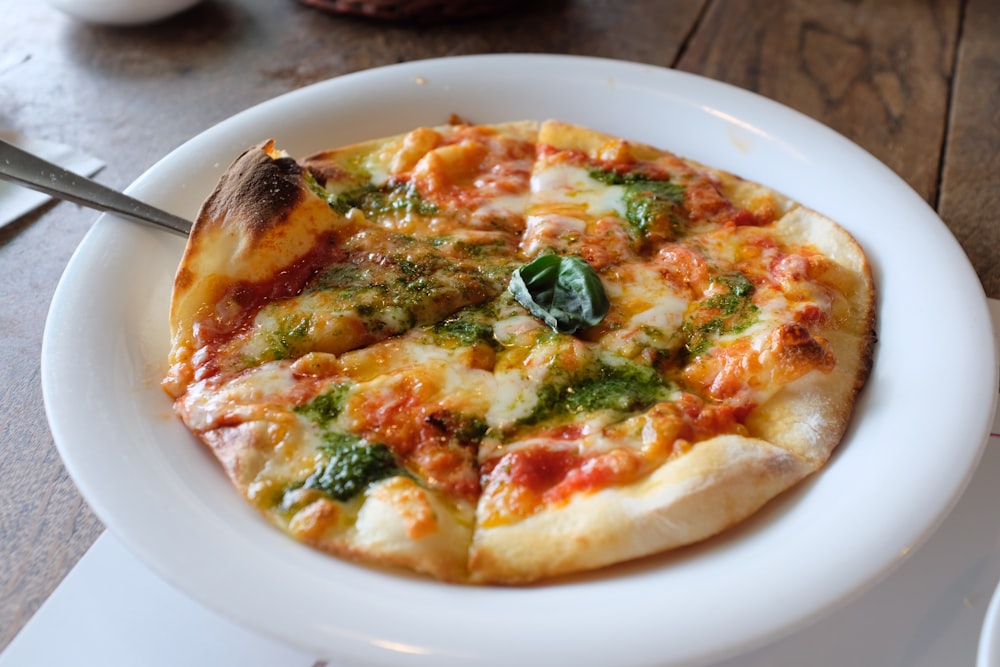How Can a New Restaurant Plan Its Menu?
Are you a new restaurant owner looking to create an enticing and profitable menu that keeps customers coming back for more? As expert Restaurant Consultants, we at Zion Hospitality understand the importance of crafting a menu that not only resonates with your vision but also delights your patrons' taste buds. Planning a menu is more than just listing dishes – it's an art that involves careful consideration, market research, and creativity. In this comprehensive guide, we'll walk you through the step-by-step process of how to plan a menu that captures the essence of your establishment while ensuring a memorable dining experience.
Table of Contents
-
Understanding Your Restaurant's Concept
-
Identifying Your Target Audience
-
Crafting a Balanced Variety
-
Creating Signature Dishes
-
Designing a Readable Menu Layout
-
Pricing Strategies that Work
-
Training Staff and Ensuring Consistency
1. Understanding Your Restaurant's Concept
Understanding Your Restaurant's Concept is the foundational step in creating a menu that resonates with your customers and aligns with your overall brand identity. At Zion Hospitality, our best restaurant consultants in india emphasize the significance of a well-defined concept as it guides the entire menu planning process. This concept encapsulates the essence of your restaurant, influencing everything from the menu offerings to the ambiance and customer experience.
Defining Your Unique Identity:
Your restaurant's concept is what sets you apart from the competition. Are you aiming for a rustic, farm-to-table vibe or a contemporary fusion of flavors? Clearly defining your concept helps you stay focused and consistent in your menu planning. It's about telling a story through your food and creating an emotional connection with your diners.
Matching Menu to Atmosphere:
Zion Hospitality emphasizes the importance of harmonizing your menu with the restaurant's ambiance. A fine-dining establishment might have an elaborate, gourmet-focused menu, while a cozy café may offer comforting, casual fare. The menu should reflect the expectations your guests have when they step into your restaurant.
2. Identifying Your Target Audience
Identifying Your Target Audience is a pivotal step in crafting a menu that resonates with diners and reflects your restaurant's concept. Restaurant Consultants in Mumbai like Zion Hospitality, recognize that understanding your audience is essential for effective menu planning.
Understanding Preferences and Demographics:
Pinpoint the preferences and dining habits of your potential customers. Are you targeting families, millennials, or professionals? This insight informs your menu choices. Zion Hospitality emphasizes studying demographics. Age, gender, income, and location all play a role in shaping menu offerings that cater to your audience's needs.
Catering to Tastes:
Tailor your menu to your audience's tastes. For instance, if you're catering to health-conscious diners, offer a range of fresh, nutritious options. Your target audience's expectations should drive your menu. If you're a casual eatery, comfort food might be the focus. For a fine-dining setting, consider more sophisticated dishes. Stay updated on food trends your audience is likely to enjoy. This allows you to add innovative dishes that excite and engage diners.
IDENTIFY YOUR TARGET AUDIENCE
3. Crafting a Balanced Variety
Crafting a Balanced Variety is a crucial aspect of creating a menu that appeals to a wide range of diners while staying true to your restaurant's concept. At Zion Hospitality, our restaurant consultants understand that offering diversity while maintaining coherence is key for effective menu planning.
Covering Different Tastes:
Ensure your menu includes options that cater to various taste preferences. From savory to sweet, offering a spectrum of flavors ensures there's something for everyone. Zion Hospitality advises dividing your menu into well-defined sections. Appetizers, main courses, and desserts provide a structured experience for diners.
Dietary Considerations:
Incorporate options for different dietary needs. Vegetarian, vegan, and gluten-free choices accommodate a wider audience and demonstrate inclusivity.
Cultural and Culinary Exploration:
Introduce a variety of cuisines or cooking techniques. This not only adds interest but also invites diners to explore new culinary experiences. Variety also extends to portion sizes and pricing. Offer smaller portions for lighter eaters and heartier dishes for those seeking a filling meal.
4. Creating Signature Dishes
Creating Signature Dishes is a pivotal step in establishing a unique culinary identity for your restaurant. At Zion Hospitality, our consultants recognize that signature dishes not only define your menu but also leave a lasting impression on diners. Restaurant Consultant in India should keep in mind the diversity that the nation offers while creating Signature Dishes, although one dish does not serve all but the primary focus should be to cover a huge variety of customers.
Uniqueness and Memorability:
Craft dishes that set your restaurant apart. These signature items become synonymous with your brand and give customers a reason to visit. Zion Hospitality emphasizes infusing creativity into your signature dishes. This could mean a fusion of flavors, a playful presentation, or a unique ingredient combination.
Highlighting Specialties:
Draw inspiration from your restaurant's concept. If you focus on seafood, create a standout seafood dish that embodies your concept's essence. Ensure that your signature dishes consistently meet high quality standards. Diners should expect excellence every time they order these items.
Telling a Story:
Use your signature dishes to tell a story about your restaurant's journey, inspiration, or ethos. This narrative enhances the dining experience.
CREATE YOUR SIGNATURE DISHES
5. Designing a Readable Menu Layout
Crafting a readable menu layout isn't just about aesthetics – it's a strategic decision that can impact customer choices and your restaurant's profitability. Restaurant Consultancy firms help you in designing a readable menu layout. Let's delve into the business-oriented thought process that should guide your menu layout design:
Customer-Focused Organization
Prioritize customer experience by organizing your menu according to how customers make dining decisions. Group similar items together under clear headings such as appetizers, entrees, and desserts. This enables customers to quickly find what they're looking for.
Highlighting High-Profit Items
Strategically position high-margin dishes where customers' attention naturally falls – often in the top-right corner or at the beginning of each section. This prime real estate can drive sales of items that contribute more to your bottom line.
Simplicity and Readability
Choose fonts that are easy to read and maintain a consistent size throughout the menu. Clear typography reduces cognitive load and enhances customers' ability to comprehend your offerings. Position prices to the right of menu items in a uniform manner. This consistent pricing placement allows customers to focus on dish descriptions without distractions.
Visual Appeal
Incorporate high-quality images sparingly and selectively. Visual representations can entice customers and highlight certain dishes, contributing to their overall perception of value. Allocate space wisely, considering that an overwhelming menu can deter customers. Balance information with whitespace to create a visually pleasing and easy-to-digest layout.
6. Pricing Strategies that Work
Setting the right prices for your menu items is a delicate balance between profitability and customer perception. Your pricing strategy should consider factors like food costs, competition, and perceived value. Here are some effective pricing strategies to help your restaurant succeed:
Cost Analysis:
Begin by calculating the cost of ingredients, labor, overhead, and other expenses for each dish. Factor in portion sizes and any potential waste. This provides a baseline for setting prices that cover your costs while allowing for a reasonable profit margin. Research your competitors' pricing to understand the market landscape. Consider your restaurant's positioning – whether it's high-end, mid-range, or budget-friendly – and price accordingly. Charging significantly more or less than your competitors without justification can affect how customers perceive your offerings.
Value Perception:
Customers evaluate the value they receive for the price they pay. A well-priced menu item should offer perceived value that aligns with the cost. Emphasize unique features, premium ingredients, and exceptional presentation to justify higher prices. Strategically position high-margin items or specials where customers' eyes naturally gravitate on the menu. These "anchor" items can influence their choices and drive more sales of profitable dishes.
Test and Analyze:
Introduce new menu items or pricing strategies as experiments. Monitor the impact on sales, customer feedback, and profit margins. Analyze data to identify which strategies are resonating with customers and driving revenue. Offer bundled deals that encourage customers to spend more than they initially planned. Combining items at a discounted price can lead to larger orders and increased average checks. Implement tiered pricing based on portion sizes or levels of complexity. This provides options for different customer preferences while capitalizing on higher margins for smaller portions.
7. Training Staff and Ensuring Consistency
The process of training staff and ensuring consistency within your restaurant is a strategic endeavor that directly impacts customer satisfaction, operational efficiency, and the overall success of your business. Let's delve into the thought process that underpins effective staff training and restaurant management:
Training Needs Assessment:
Conduct a thorough analysis of your restaurant's needs. Identify areas where staff training is essential, considering factors such as menu complexity, service standards, and safety protocols. Define clear and measurable training objectives. Whether it's enhancing menu knowledge, improving customer service skills, or perfecting technical tasks, your objectives should align with your business goals.
Menu Mastery:
Prioritize comprehensive menu knowledge. Staff should understand every dish, its ingredients, cooking methods, and potential modifications. This knowledge empowers them to offer accurate recommendations and address customer inquiries confidently.
Master Service:
Train your staff in the art of exceptional customer service. Emphasize active listening, empathy, and effective communication. Exceptional service can set your restaurant apart from competitors.
Consistency in Execution:
Establish standardized operating procedures for various tasks. From table setup to order-taking, consistency in execution ensures a seamless and uniform dining experience for every customer.
Assessment and Feedback:
Implement assessment mechanisms to evaluate staff performance. Regular feedback sessions provide opportunities for improvement and acknowledge achievements. Integrate quality control checks to maintain consistency in food preparation, presentation, and service. These checks ensure that every customer experiences the same level of excellence.
TRAIN YOUR STAFF AND ENSURE CONSISTENT SERVICES
Conclusion
Crafting a restaurant menu is a blend of creativity, strategy, and customer understanding, and at Zion Hospitality, we're here to guide you every step of the way. By following these meticulously crafted steps, you can develop a menu that not only mirrors your restaurant's unique identity but also resonates deeply with your customers' evolving tastes. Remember, a well-thought-out menu isn't just a list of dishes – it's the gateway to a remarkable culinary journey that we're excited to help you embark upon. Your success is our passion, and with Zion Hospitality, your restaurant's menu will stand as a testament to exceptional dining experiences.
FAQs
1. How should I set prices for menu items?
Pricing should cover costs and reflect value. Analyze ingredients, competition, and perceived value to find the right balance.
2. What's the key to consistent quality in dishes?
Standardized procedures and quality checks ensure consistent excellence. Ongoing training and feedback play a vital role.
3. How do I cater to diverse dietary preferences?
Offer varied menu options and clear dietary labels. Provide customizable choices whenever possible.
4. Why is a readable menu layout important?
A clear layout guides customers and enhances the dining experience. Organized headings, descriptions, and pricing aid decision-making.
5. How can I maintain consistent customer experiences?
Thorough staff training, standardized processes, and regular quality checks establish consistent service standards.
6. Can I update my menu while keeping consistency?
Yes, introduce new items in line with your concept. Maintain quality control for both new and existing offerings.
7. How do I identify my target audience effectively?
Analyze demographics and preferences to tailor your menu. Consider age, income, and location for accurate targeting.
8. What's crucial for creating signature dishes?
Unique dishes aligned with your concept, consistent delivery, and storytelling contribute to memorable dining experiences.
9. What's the significance of staff feedback?
Staff insights highlight operational challenges and customer preferences. An environment fostering feedback improves overall experiences.
10. How can I ensure consistent staff performance?
Comprehensive training, role-specific education, and ongoing feedback uphold consistent service quality.


